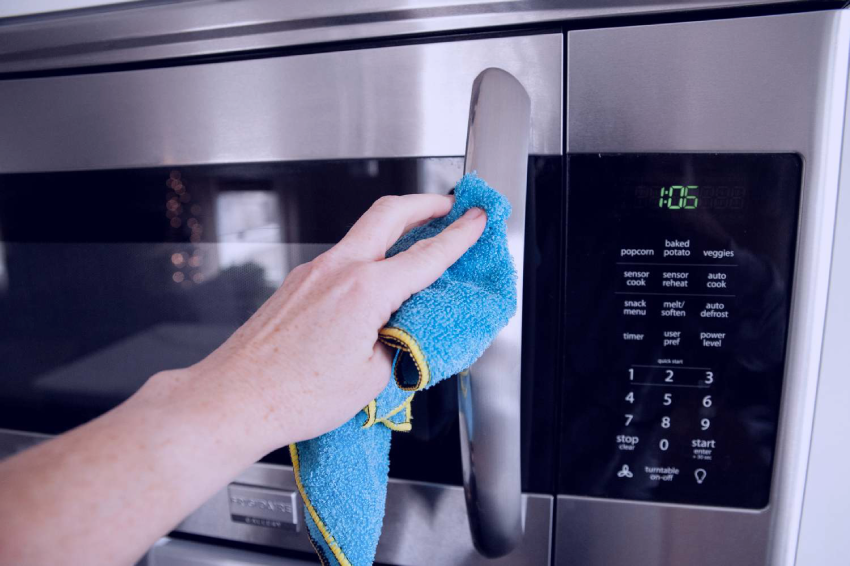Shine On: How to Clean Brushed Steel Kitchen Appliances Like a Pro
Understanding Brushed Steel
Brushed steel is a popular choice for kitchen appliances due to its sleek, modern look and resistance to fingerprints. However, it’s not immune to smudges, water spots, and grease; Understanding its unique surface is key to effective cleaning. The “brushed” effect comes from a process that creates fine lines on the metal, making it crucial to clean with the grain to avoid damage.
Essential Cleaning Supplies
Before you start, gather your supplies. Using the right tools will make the job easier and prevent scratches. Here’s what you’ll need:
- Microfiber cloths (essential!)
- Mild dish soap
- Warm water
- White vinegar (optional, for stubborn stains)
- Baking soda (optional, for tougher grime)
- Spray bottle (optional, for vinegar solution)
Tip: Always test any cleaning solution on an inconspicuous area first to ensure it doesn’t damage the finish.
The Cleaning Process: Step-by-Step
Now, let’s get cleaning! Follow these steps for sparkling brushed steel appliances:
- Prepare your cleaning solution: Mix a few drops of mild dish soap with warm water.
- Dampen a microfiber cloth: Wring out the cloth so it’s damp, not soaking wet.
- Wipe with the grain: Gently wipe the appliance surface, following the direction of the brushed lines. This is crucial to avoid scratching.
- Rinse with a clean, damp cloth: Remove any soap residue with a fresh, damp microfiber cloth.
- Dry thoroughly: Use a dry microfiber cloth to buff the surface and prevent water spots.
Pro Tip: For stubborn fingerprints, try using a dedicated stainless steel cleaner. Follow the manufacturer’s instructions carefully.
Dealing with Stubborn Stains
Sometimes, soap and water aren’t enough. Here are a few options for tackling tougher stains:
Vinegar Solution
A diluted vinegar solution (equal parts white vinegar and water) can help remove water spots and mineral deposits. Spray the solution onto a microfiber cloth and wipe with the grain. Rinse and dry thoroughly.
Baking Soda Paste
For baked-on grease, create a paste of baking soda and water. Gently apply the paste to the stain, let it sit for a few minutes, and then wipe away with a damp cloth. Rinse and dry thoroughly.
Maintenance and Prevention
The best way to keep your brushed steel appliances looking their best is to clean them regularly and take preventative measures. Wipe down your appliances after each use to remove spills and splatters. Avoid using abrasive cleaners or scouring pads, as these can scratch the surface. Consider applying a stainless steel protectant to help repel fingerprints and water spots.
FAQ: Cleaning Brushed Steel Appliances
Addressing Common Cleaning Mistakes
Despite best intentions, certain cleaning practices can inadvertently damage brushed steel surfaces. A prevalent error involves the utilization of abrasive cleaning agents, such as scouring powders or steel wool. These materials inflict microscopic scratches, compromising the aesthetic integrity of the finish and rendering it more susceptible to future staining. Similarly, the application of excessive force during cleaning can exacerbate existing imperfections or create new ones. A gentle, deliberate approach is paramount.
Cautionary Note: Avoid ammonia-based cleaners. Ammonia can discolor brushed steel and leave unsightly streaks that are difficult to remove.
Selecting Appropriate Cleaning Products
The market offers a plethora of cleaning products specifically formulated for stainless steel. However, not all are created equal. Prioritize products that explicitly state their suitability for brushed finishes. These formulations typically contain mild surfactants and polishing agents designed to lift dirt and grime without causing abrasion. Furthermore, consider the environmental impact of your chosen cleaning products. Opt for biodegradable and non-toxic alternatives whenever feasible.
- Read the Label: Carefully review the product label to ensure it is appropriate for brushed steel.
- Consider the Ingredients: Look for products with mild, non-abrasive ingredients.
- Test Before Use: Always test the product on an inconspicuous area before applying it to the entire appliance.
The Role of Protective Coatings
The application of a protective coating can significantly extend the lifespan and maintain the appearance of brushed steel appliances. These coatings, typically composed of polymers or waxes, create a barrier against fingerprints, water spots, and other contaminants. They also facilitate easier cleaning and reduce the frequency of required maintenance. The selection of an appropriate coating should be predicated on its durability, resistance to heat and chemicals, and ease of application.
Recommendation: Reapply protective coatings every few months, or as directed by the manufacturer, to maintain optimal performance.
Long-Term Care and Preservation
Beyond routine cleaning, proactive measures can contribute to the long-term preservation of brushed steel appliances. Shielding appliances from direct sunlight can mitigate discoloration and fading. Promptly addressing spills and splatters prevents the formation of stubborn stains. Furthermore, avoiding the placement of abrasive objects directly on the surface minimizes the risk of scratches. By adhering to these guidelines, one can ensure that brushed steel appliances retain their aesthetic appeal for years to come.
Advanced Cleaning Techniques for Commercial Applications
In commercial settings, where appliances are subjected to more frequent and intensive use, more robust cleaning protocols may be necessary. This may involve the utilization of specialized cleaning equipment, such as steam cleaners or ultrasonic cleaners, to effectively remove accumulated grease and grime. However, caution must be exercised to ensure that these methods do not damage the brushed steel finish. Consulting with a professional cleaning service experienced in the maintenance of commercial-grade appliances is highly recommended.






